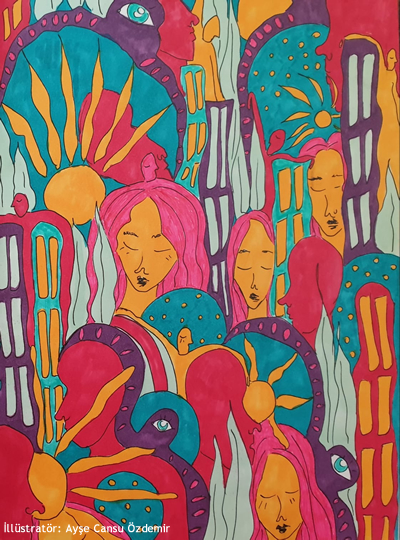
Music is effective because it is a speechless way of communication, it is a natural factor of motivation, it is in the moment, and it provides the will power for undertaking non-musical activities. Most importantly, almost everybody reacts positively to at least one kind of music.
Autism, is the state of one’s being alienated to the realities of the outside world and living in the internal world of his or her own. Autistic children show disorders in social relations, especially in making eye-contact, in assertiveness and sharing experiences; and at the same time in using body or spoken language. They also seem to have specific deteriorations in handling their temporary perceptions, and this relates to their infancy difficulties in verbal interactions. Despite all these, it has frequently been reported that autistic children are sensitive to music and conventional music therapy (Wimpory&Nash 1999:17).
Music may help to establish more expressive and cheerful communication with autistic people. Autistic children sometimes sing even though they do not talk. Music-making involves many of the fundamental elements of social interaction - self-awareness and 'self in relation to another'. Because of this, the musical aspects of interpersonal timing attuned reciprocity in shared play, turn-taking, listening and responding to another person can be augmented in music therapy with people with autism to accommodate and address their frequently idiosyncratic and avoidant styles of communication. Music therapy encourages increased self-awareness/self-other awareness, leading to more overt social interactions. It is argued (Brown 1994) that participating in music therapy allows the person with autism to experience and explore a wider range of emotions.
Music is increasingly used as part of early intervention programmes for children with autism, as it has been recognised that musical interaction stimulates similar communicative behaviour to the early emotional interaction between mother and infant, which is crucial to the later development of social skills, but is usually severely limited by a childs autism. For any age group, music therapy is most usually part of a multi-disciplinary programme, offering an enriched learning environment for development of communication and other aspects of a child's personality.
Music is able to provide a consistent environment where the child feels safe. The melody or rythm of a popular song, may help the child feel comfortable in a stressed or unfamiliar atmosphere; and the music may also provide unlimited flexibility at the same time. It reflects the behaviours and emotions of the child (Gadberry 2005:4).
Robarts claims that with musical interactions, autistic children acquire behaviours of own-sense and being able to react more easily to social transections.
An interaction with a musical instrument is an important factor for an autistic child to get more interested in music.
The work done under music therapy, should be perceived as the relation of the child with music, rather than as educating the child on music; and thus, music therapy should be accepted as being one of the supporting elements in the whole educational program of an autistic person.
The text is a compilation of information from “The National Autistic Society” web site, and from Orçun Berrakçay’s work on autism and music.